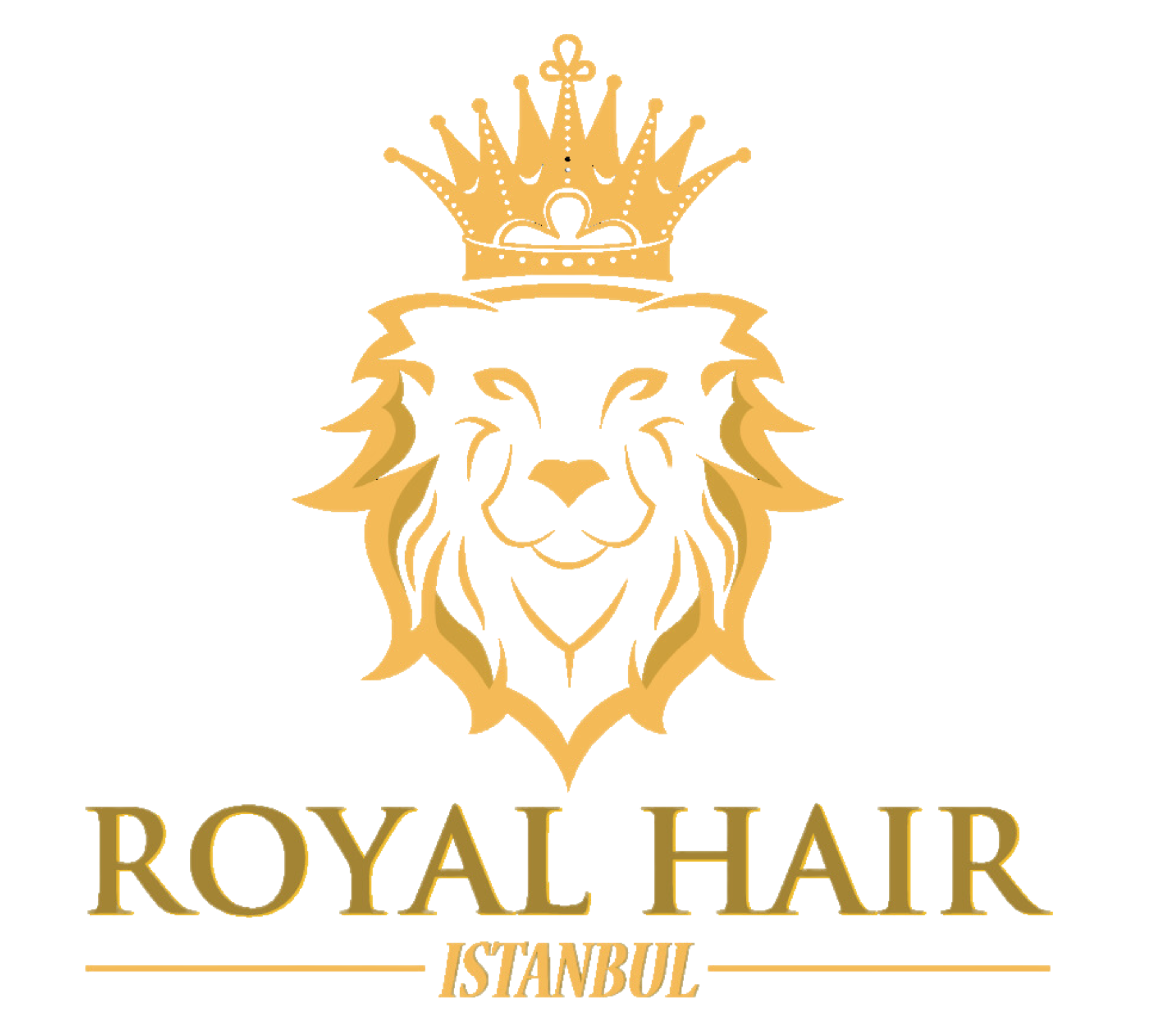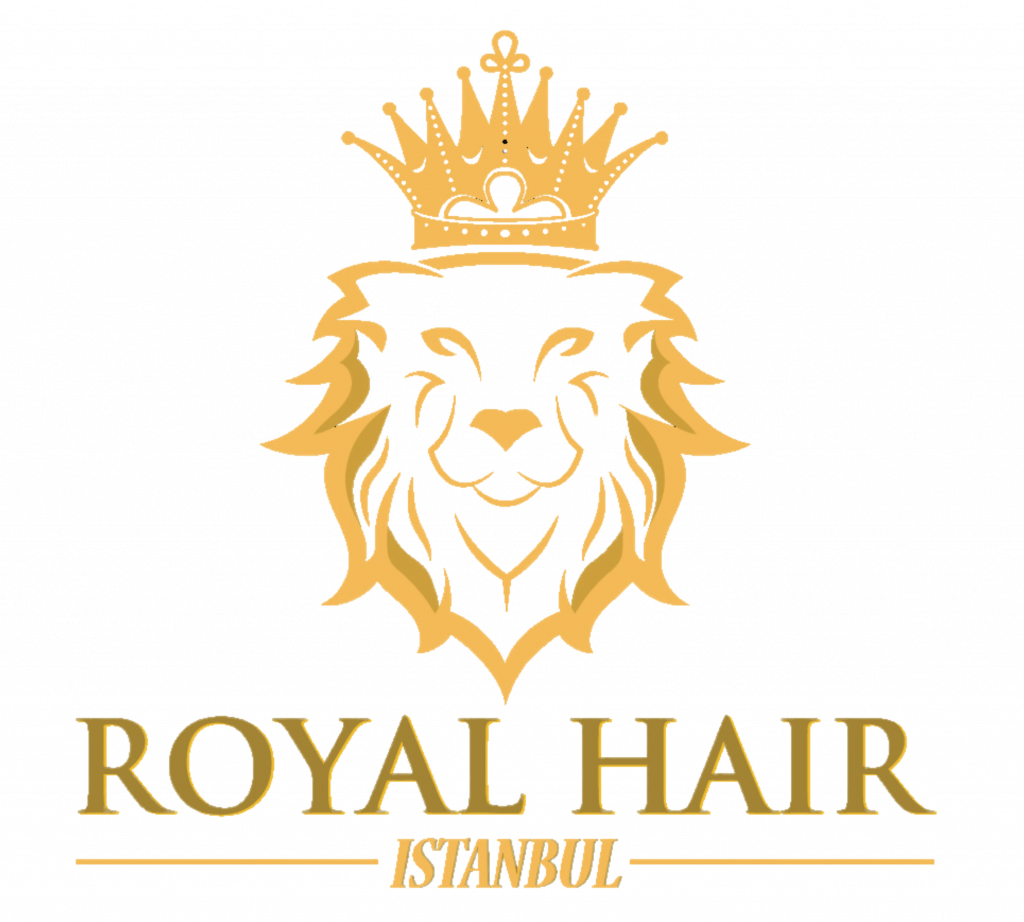زراعة اللحية
المنزل
زراعة اللحية
خدمات زراعة الشعر

أطلق العنان لثقتك بنفسك اليوم!
احجز استشارتك للحصول على الخدمات التجميلية التحويلية
ما هي زراعة اللحية في تركيا
زراعة اللحية في تركيا، التي تقدمها رويال هير ترانسبلانت، هي عملية متطورة مصممة لمعالجة شعر الوجه المتناثر أو غير المنتظم.
يضمن هذا العلاج نتائج طبيعية المظهر عن طريق زرع بصيلات الشعر بعناية من المناطق المانحة في منطقة اللحية باستخدام أحدث التقنيات مثل استخلاص وحدة الجريبات (FUE) وزراعة الشعر المباشرة (DHI).
تقدم الخبرة التركية المشهورة في مجال السياحة العلاجية أسعاراً تنافسية ورعاية شاملة وفترات نقاهة أقل، مما يجعلها خياراً مثالياً للأفراد الذين يبحثون عن حلول دائمة لتحسين مظهر وجههم بلحية أكثر امتلاءً وجمالاً.
جدول المحتويات
عملية زراعة اللحية في تركيا
في رويال هير إسطنبول، صُممت عملية زراعة اللحية لدينا بدقة لتقديم نتائج طبيعية ودائمة تعزز من مظهر وجهك. فيما يلي نظرة تفصيلية على كيفية تحقيق التحول المطلوب في لحيتك:
- الاستشارة والتقييم: تبدأ رحلتك باستشارة شاملة حيث يقوم الجراحون الخبراء لدينا بتقييم بنية وجهك ونمط نمو الشعر ونمط اللحية المرغوب فيه. يضمن لك هذا النهج المخصص أن نقوم بتصميم العملية لتلبية أهدافك الخاصة.
- التحضير: قبل الإجراء، يتم تحضير المنطقة المانحة (عادةً ما تكون مؤخرة فروة الرأس) والمنطقة المتلقية (حيث ستُزرع اللحية) بعناية. يتم التخدير الموضعي لضمان راحتك طوال العملية.
- استخراج بصيلات الشعر: باستخدام تقنية DHI (زراعة الشعر المباشرة) المتقدمة، يتم استخراج بصيلات شعر فردية من المنطقة المانحة. تقلل هذه التقنية من إصابة فروة الرأس وتضمن بقاء البصيلات على قيد الحياة لزراعتها.
- زراعة بصيلات الشعر: تُزرع البصيلات المستخرجة بدقة في المنطقة المتلقية باتباع نمط النمو الطبيعي لشعر وجهك الحالي. يولي الجراحون لدينا اهتماماً كبيراً بالزوايا والكثافة والاتجاه لتحقيق تكامل سلس مع لحيتك.
- رعاية ما بعد الجراحة: بمجرد اكتمال عملية الزرع، يتم توفير تعليمات الرعاية بعد العملية لتحسين الشفاء وضمان أفضل النتائج الممكنة. يكرس فريقنا جهوده لدعمك طوال رحلة تعافيك.
- المتابعة والنتائج: على مدار الأسابيع والأشهر التالية، ستلاحظ أن لحيتك الجديدة تتشكل تدريجياً. إن التزامنا بالتميز يعني أننا نحدد لك مواعيد للمتابعة لمتابعة تقدمك والإجابة عن أي أسئلة أو مخاوف قد تكون لديك.
اختبر دقة وفن زراعة اللحية في رويال هير إسطنبول. اتصل بنا اليوم لتحديد موعد لاستشارتك واكتشف كيف يمكننا مساعدتك في الحصول على اللحية التي تحلم بها بكل ثقة وخبرة.
مع استمرار ارتفاع شعبية عمليات زراعة اللحية في تركيا، يبحث المزيد من الأفراد عن حلول طبيعية لتحسين مظهر وجههم. سواءً كنت ترغب في الحصول على لحية أكثر امتلاءً وتحديداً أو ترغب في إخفاء المناطق غير المكتملة، فإن عيادتنا الحديثة تقدم حلولاً مصممة خصيصاً لتلبية احتياجاتك الفريدة.
نحن في رويال هير إسطنبول، ندرك أن اللحية أكثر من مجرد شعر الوجه – إنها تعبير عن الأناقة والرجولة. يستخدم فريقنا من الجراحين المهرة تقنيات DHI (زراعة الشعر المباشرة) المتقدمة لضمان الحصول على نتائج طبيعية المظهر تمتزج بسلاسة مع شعر وجهك الحالي. مع سنوات من الخبرة والالتزام بالتميز، نسعى جاهدين ليس فقط لتقديم نتائج تجميلية استثنائية ولكن أيضاً لتوفير تجربة مريحة ومطمئنة للمريض.
فوائد زراعة اللحية
- تعزيز الثقة الشخصية: يمكن للحية الكاملة والمحددة بشكل جيد أن تعزز ثقتك بنفسك وثقتك بنفسك بشكل عام. فهي تضفي مظهراً جمالياً ذكورياً يمكن أن يؤثر بشكل إيجابي على نظرتك لنفسك ونظرة الآخرين إليك.
- تحسين جماليات الوجه المحسّنة: سواء كنت تتطلع إلى ملء المناطق غير المكتملة أو تحديد خط الفك أو ببساطة الحصول على مظهر أكثر توازناً للوجه، فإن زراعة اللحية في رويال هير إسطنبول يمكن أن تساعدك. تضمن تقنياتنا المتخصصة أن تبدو لحيتك طبيعية وتكمل ملامح وجهك بشكل مثالي.
- براعة في الأسلوب: مع اللحية المزروعة بشكل احترافي، ستحصل على حرية تجربة أنماط مختلفة من اللحية. من اللحية الخشنة إلى الأنيقة، يمكنك تخصيص لحيتك لتتناسب مع تفضيلاتك الشخصية وتكييفها مع تطور الاتجاهات.
- مظهر وملمس طبيعي: باستخدام تقنيات DHI (زراعة الشعر المباشرة) المتطورة، يضمن الجراحون المهرة لدينا أن عملية زراعة اللحية ستحصل على لحية ذات مظهر طبيعي تتكامل بسلاسة مع شعر وجهك الحالي. ينمو الشعر المزروع ويتصرف مثل الشعر الطبيعي، مما يمنحك مظهراً طبيعياً.
- الاستمالة السهلة قل وداعاً لمتاعب الصيانة اليومية. تتطلب اللحية المزروعة الحد الأدنى من الصيانة مقارنةً بطرق العناية التقليدية، مما يتيح لك الاستمتاع بمظهر جيد بكل سهولة.
- حلول مخصصة: نتفهم في رويال هير إسطنبول أن بنية وجه كل فرد وأهدافه الجمالية فريدة من نوعها. يتم تصميم إجراءاتنا لتلبية احتياجاتك الخاصة، مما يضمن لك تحقيق النتائج المرجوة التي تعزز تناسق وجهك وجاذبيته بشكل عام.
غيّر مظهر وجهك وأطلق العنان لمستوى جديد من الثقة مع زراعة اللحية في رويال هير إسطنبول. اتصل بنا اليوم لتحديد موعد لاستشارتك واكتشاف كيف يمكن لفريق خبرائنا مساعدتك في الحصول على تسريحة لحيتك المثالية.
المرشحون المثاليون لزراعة اللحية
في رويال هير إسطنبول، نؤمن في رويال هير إسطنبول بالرعاية الشخصية التي تبدأ بفهم من هو المرشح المثالي لزراعة اللحية. وعادةً ما يشمل المرشحون المثاليون الأفراد الذين يعانون من ترقق شعر الوجه أو عدم وجود شعر الوجه أو غياب شعر الوجه بالكامل بسبب العوامل الوراثية أو الندبات أو غيرها من العوامل. يقوم الجراحون الخبراء لدينا بتقييم مدى ملاءمة كل مرشح بناءً على عوامل مثل كثافة الشعر ونوع البشرة ونمط اللحية المرغوب فيه.
يجب أن يكون المرشحون في صحة جيدة بشكل عام وأن تكون لديهم توقعات واقعية فيما يتعلق بنتائج الإجراء. سواءً كنت تتطلع إلى تحسين منطقة معينة أو الحصول على لحية كاملة، فإن نهجنا المخصص يضمن تقييم كل جانب من جوانب ترشيحك بعناية. نحن نعطي الأولوية للسلامة والرضا، ونضمن أن كل إجراء يتم تخصيصه لتقديم نتائج طبيعية المظهر تكمل ملامح وجهك.
إذا كنت تشعر بالفضول بشأن ما إذا كنت مؤهلاً كمرشح مثالي لزراعة اللحية، اتصل برويال هير إسطنبول اليوم. فريقنا المتعاطف موجود هنا لتقديم الإرشاد والدعم، ومساعدتك على اتخاذ قرارات مستنيرة بشأن رحلتك للحصول على لحية أكثر امتلاءً وثقة.
قبل وبعد تحولات زراعة اللحية زراعة اللحية
شاهد التحولات الرائعة التي تحققت من خلال عمليات زراعة اللحية في رويال هير إسطنبول. يعرض معرض الصور الخاص بنا قبل وبعد عمليات زراعة اللحية النتائج المذهلة التي أعادت الثقة بالنفس وعززت تناسق الوجه لعملائنا. سواءً كان ذلك لتصحيح المناطق المتفرقة أو ملء البقع أو الحصول على لحية جديدة بالكامل، يستخدم جراحونا الخبراء تقنيات متقدمة لتحقيق نتائج طبيعية المظهر.
التعافي والرعاية اللاحقة لزراعة اللحية
-
الرعاية الفورية بعد العملية الجراحية:
- توقع حدوث انزعاج أو تورم خفيف، وعادةً ما يزول في غضون أيام قليلة.
- الأدوية المقدمة للسيطرة على الانزعاج وتعزيز الشفاء.
- يوصى بالراحة في الأيام القليلة الأولى، مع تجنب الأنشطة الشاقة.
-
حماية بصيلات الشعر المزروعة:
- يُنصح بتقنيات التنظيف اللطيفة للحفاظ على النظافة دون تعطيل البصيلات.
- تجنبي أشعة الشمس المباشرة ودرجات الحرارة الشديدة لحماية الشعر المزروع حديثاً.
-
الرعاية طويلة الأمد والمتابعة:
- نصيحة شخصية بشأن موعد استئناف ممارسات العناية الشخصية العادية.
- مواعيد متابعة منتظمة لرصد التقدم المحرز ومعالجة المخاوف.
- يتم تقديم إرشادات حول تحقيق نتائج ذات مظهر طبيعي والحفاظ عليها.
استمتع بالرعاية الداعمة والخبرة التي تقدمها لك رويال هير إسطنبول طوال فترة تعافيك من زراعة اللحية وما بعدها. اتصل بنا اليوم لتحديد موعد لاستشارتك والبدء في رحلتك نحو لحية أكثر امتلاءً وحيوية.
الآثار الجانبية لزراعة اللحية
إرشادات العناية
بعد إجراء عملية زراعة الشعر في رويال هير إسطنبول، فإن العناية المناسبة بكل من المنطقة المانحة في فروة رأسك والمنطقة المتلقية على وجهك أمر بالغ الأهمية لتحقيق الشفاء الأمثل. سيقدم لك الأخصائي الخاص بك تعليمات العناية المنزلية المخصصة، والتي قد تشمل:
- استخدام مرهم المضادات الحيوية: يوضع حسب التوجيهات لتعزيز الشفاء والوقاية من العدوى.
- تجنب أنشطة معينة: الامتناع عن السباحة، والتعرض المباشر للشمس، والتدخين، واستخدام الساونا أو أحواض الاستحمام الساخنة، والأنشطة البدنية الشاقة، ولمس أو خدش المناطق المعالجة.
الآثار الجانبية المحتملة
بعد الإجراء، قد تعاني من آثار جانبية مؤقتة، مثل:
- التورم: توقعي حدوث بعض التورم حول المناطق المعالجة.
- الاحمرار والضيق: قد تظهر فروة الرأس والوجه باللون الأحمر والشعور بالشد بعد الجراحة.
- الخدر: الخدر المؤقت في مناطق المتبرع والمتلقي أمر شائع.
- القشور أو القشور: قد تتكون قشور أو قشور مؤقتة كجزء من عملية الشفاء.
- الندبات: في حين أن التندب في المنطقة المتبرع بها هو أمر طبيعي، فإن تقنيات الاقتطاف عادةً ما ينتج عنها ندوب صغيرة وأقل وضوحاً مقارنةً بطرق FUT.
إذا لاحظت احمرارًا طويلًا أو تورمًا أو أي انزعاج غير عادي بعد مرحلة الشفاء الأولية، يُرجى الاتصال بفريقنا في رويال هير إسطنبول للحصول على مزيد من الإرشادات.
زراعة اللحية في تركيا التكلفة 2024 في رويال هير إسطنبول
هل تفكر في زراعة اللحية في تركيا؟ تقدم لك رويال هير إسطنبول حلولاً متخصصة مصممة خصيصاً لتعزيز جماليات وجهك. صُممت إجراءاتنا المتخصصة لتقديم نتائج طبيعية المظهر تكمل ملامحك وأسلوبك الشخصي.
في رويال هير إسطنبول، يستخدم فريقنا من الجراحين المتمرسين تقنيات متقدمة مثل تقنية الاقتطاف والاقتطاف بالاقتطاف وتقنية DHI لضمان الدقة والحد الأدنى من الانزعاج أثناء العملية. سواءً كنت تتطلع إلى ملء المناطق غير المكتملة أو الحصول على لحية أكثر امتلاءً، فإننا نقدم لك استشارات شخصية لفهم أهدافك وتوقعاتك. مع التزامنا بالجودة ورضا العملاء، نسعى جاهدين لجعل تجربة زراعة اللحية في تركيا رحلة سلسة نحو الثقة والمظهر الأنيق.
الأسئلة المتداولة حول زراعة اللحية في تركيا
يشمل المرشحون المثاليون الأفراد الذين يعانون من نمو لحية خفيف أو غير مكتمل بسبب الوراثة أو التندب أو عوامل أخرى.
الصحة العامة الجيدة والتوقعات الواقعية مهمة.
تستغرق الإجراءات عادةً ما بين ساعتين إلى 5 ساعات، وذلك حسب حجم عملية الزرع.
يتم استخدام التخدير الموضعي أثناء الإجراء، مما يقلل من الشعور بعدم الراحة.
يتم التحكم في الانزعاج بعد العملية باستخدام الأدوية الموصوفة.
توقع حدوث تورم وانزعاج خفيف في البداية، والذي يزول عادةً في غضون أيام قليلة.
يوصى بالعناية اللطيفة وتجنب التعرض لأشعة الشمس خلال فترة الشفاء.
يتساقط الشعر المزروع حديثاً في غضون الأسابيع القليلة الأولى، يليه نمو الشعر في غضون 3 إلى 6 أشهر.
تظهر النتائج الكاملة عادةً في غضون 9 إلى 12 شهراً.
نعم، عادةً ما تكون بصيلات الشعر المزروعة دائمة وتستمر في النمو مثل الشعر الطبيعي.
العناية المنتظمة والصيانة الدورية ضرورية لضمان ظهور لحيتك في أفضل حالاتها.
يقدم فريقنا إرشادات شخصية للعناية اللاحقة لدعم النجاح على المدى الطويل.
قد تختلف تكلفة زراعة اللحية في تركيا اعتمادًا على عوامل مثل سمعة العيادة وخبرة الجراح والتقنية المختارة (مثل FUE أو DHI) وعدد البصيلات المطلوبة.
للحصول على تقدير دقيق، من الأفضل استشارة عيادة مثل رويال هير إسطنبول مباشرةً.
رغم أن المضاعفات الناتجة عن زراعة اللحية غير شائعة، إلا أن المضاعفات الناتجة عن زراعة اللحية يمكن أن تشمل العدوى أو ردود الفعل التحسسية أو التندب أو النمو غير المتساوي. إن اختيار عيادة ذات سمعة طيبة مثل رويال هير إسطنبول واتباع تعليمات الرعاية بعد العملية يقلل من هذه المخاطر ويعزز احتمالية نجاح العملية مع نتائج طبيعية المظهر.
